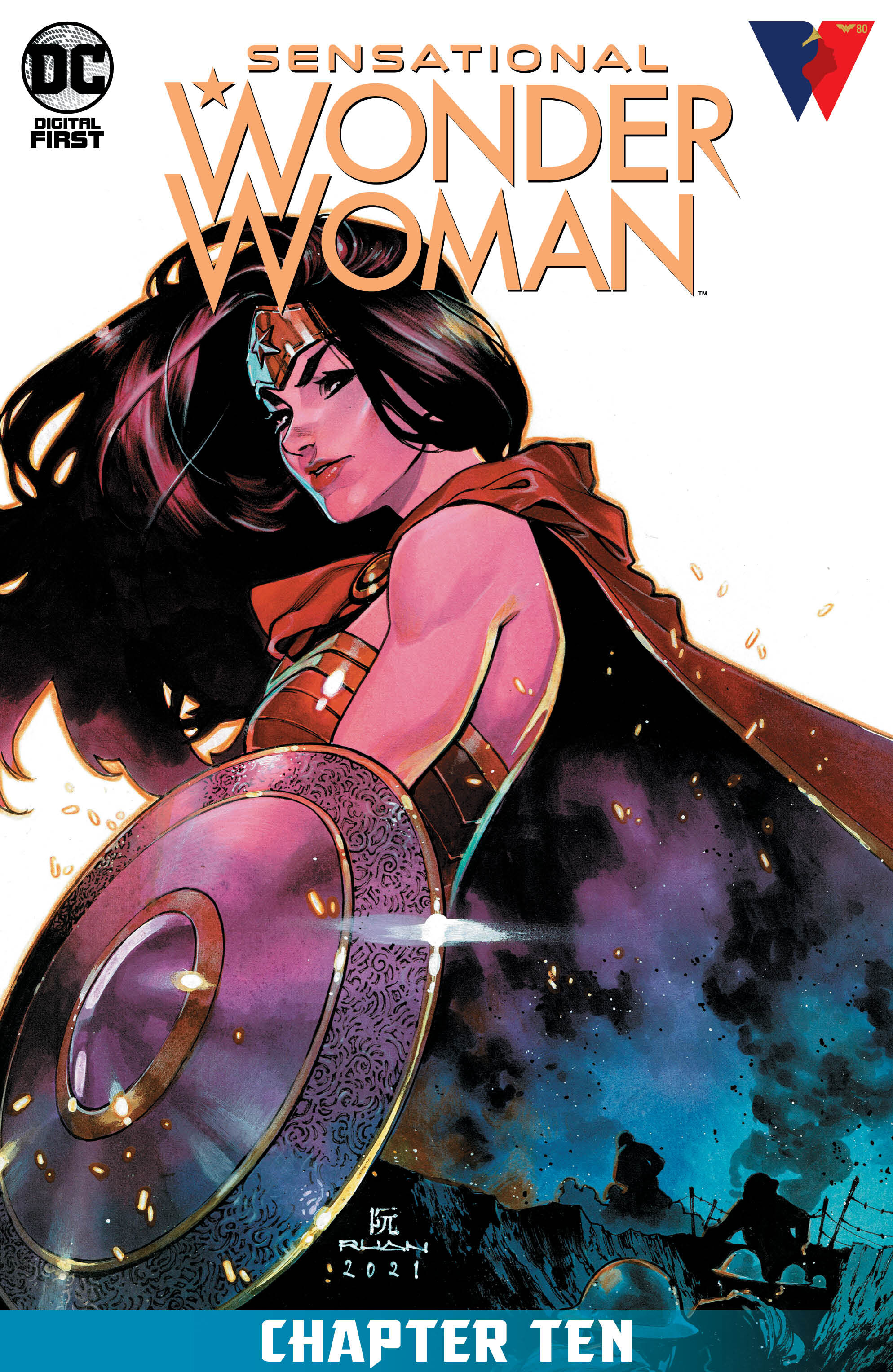Sensational Wonder Woman #9 // Review
The oldest comic book superheroes have been around for nearly a full century now. There are some worlds in which they’ve been active for decades. It’s only natural that there would be a great many civilians who would have stories of encounters with them. Writer Amy Chu tells the tale of a woman who ran into a certain hero all the way back in World War II in the first part of her “Ultimate Fangirl” story for Sensational Wonder Woman #9. Artist Maria Laura Sanapo brings Chu’s story of superhero inspiration to the page with the aid of colorist Wendy Broome.
Katie is nowhere to be found. She’s gone out walking. This wouldn’t be a cause for concern were it not for the fact that she’s a resident in a care home for the elderly. Alanzo arrives with her food and her meds, but she’s gone. The pictures of Wonder Woman framed on her walls observe a vacant room. Katie’s off at the park aiding a boy in getting his soccer ball from a tree...with her Wonder Woman replica tiara. She tells the boy a story of her youth. She was a photojournalist on the front lines in WWII when she met Wonder Woman.
A superhero’s impact on the lives of others has been possibly more consistently a focus with Wonder Woman than it has with any other character who has been around as long as she has. (It was a major focus of George Perez’s post-Crisis run on the series back in the late ’80s/early 90s.) It’s an interesting and novel approach to focus on the concerns of a single woman who met Wonder Woman once over half a century ago. The contrast between aging mortal and ageless immortal hero is a clever one that should serve to make for an interesting story as it moves into its second chapter.
Sanapo gives contemporary Katie a warmth that is sweetly echoed in the images of a contemporary Wonder Woman on the walls of her room. She imbues the younger incarnation of Katie and adventurous spirit, which is brought to the page with a flatter, more simplistic ben-day-inspired chromatic finish by Broome. While the art style bears little resemblance to that of H.G. Peter’s original 1940s Wonder Woman, the contrast between contemporary drama and WWII action is suitably powerful. Sanapo’s rendering of Wonder Woman’s heroism might feel flat in places, but the artist’s rendering of Wonder Woman’s determination is palpable.
Wonder Woman isn’t always granted the kind of immortality she seems to have been given here. Various writers have planted her history in various places. There’s real potential for interesting stories in allowing her the kind of long and winding history that she’s had in all of her 80 years. Heroes that have been around for as long as that could benefit from stories that give them credit for having been around as long as they have. The first issue of this story shows promise for delivering on the potential of a Wonder Woman who has been around for nearly a century.










